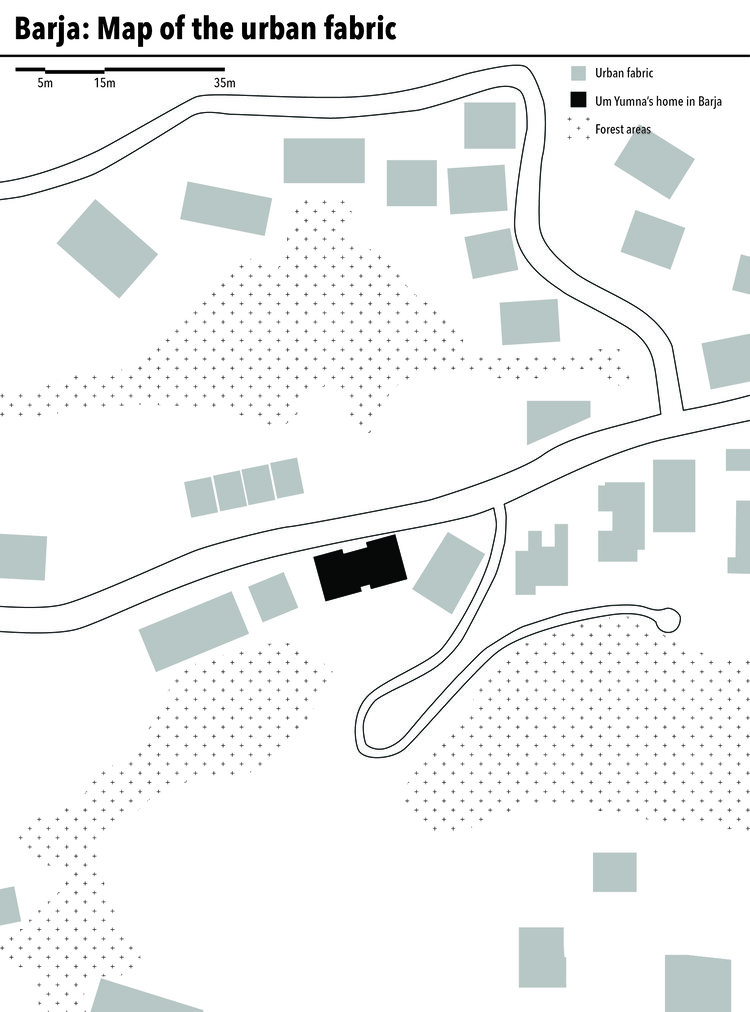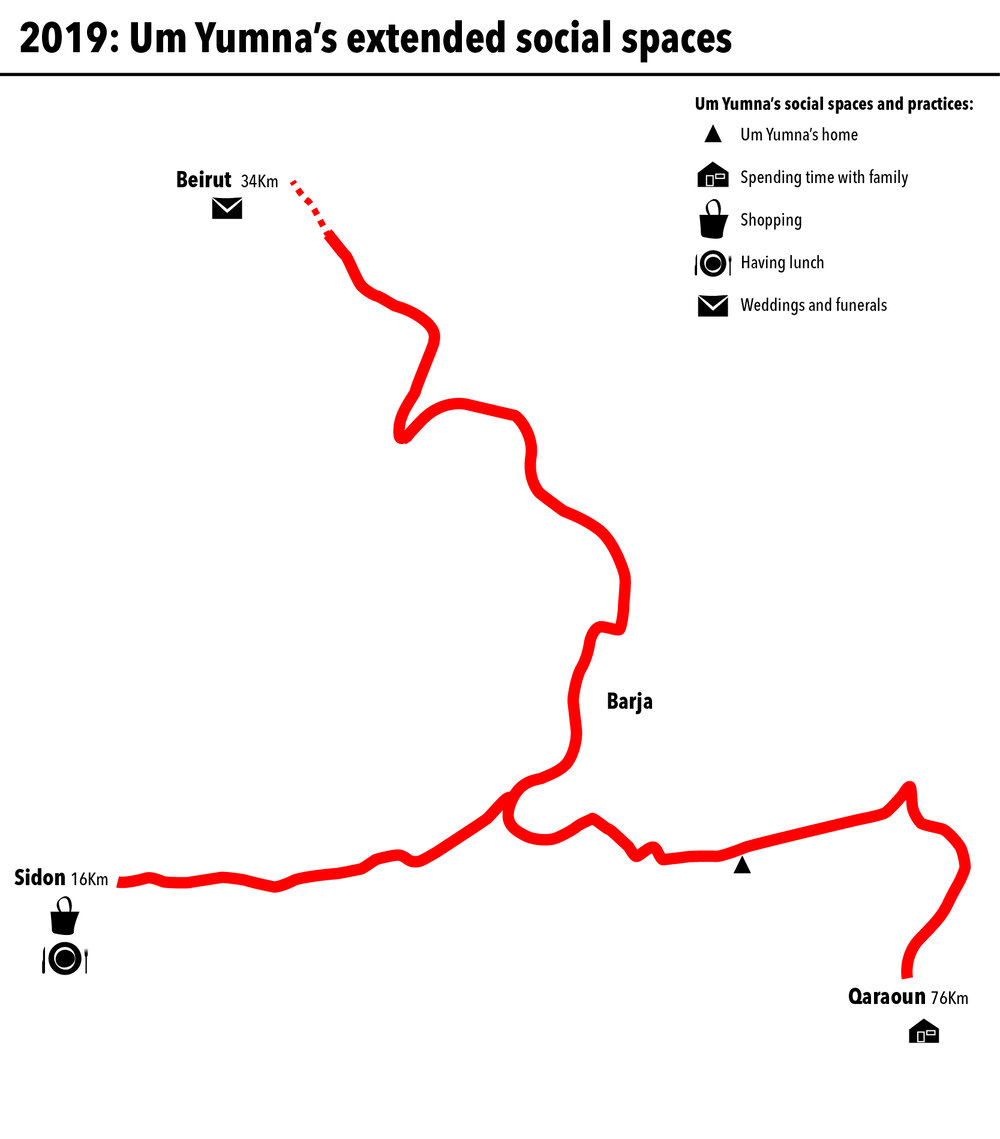From Beirut to Barja
Relationships and social spaces dwindle
In the 1950s and 1960s, Tarik Al Jadidah attracted large numbers of people from the South, Sidon, and Iklim [7], seeking work and education in the city. As for today, these areas, especially Iklim, absorb the largest portion of the reversed flow of displacement from Tarik Al Jadidah resulting from the increase in housing prices there, especially after the 2006 War [8]. Um Yumna’s family is one of many that were forced to return to their grandparents’ villages after exhausting their options for staying in the city. Like Dibbiyeh, Shheem, Jieh, and Jadra, Barja became a semi-connected extension of Beirut’s southern suburbs, namely Choueifat, Bchamoun, Aramoun, and Damour, after waves of Beirut residents surged there in an escape from rising real estate prices in the capital upon the start of reconstruction, while benefiting from these areas’ proximity to Beirut [9].
The house belonging to Um Yumna and her family is located above the center of the town, on the road leading to Marj Barja. The area is still not densely populated like the center. Yumna and one of her brothers work in Beirut. The family has three small shops on the ground floor of the house, including the grocery shop which Um Yumna runs today.These days, Um Yumna spends most of her time at this grocery shop. After surrendering to the inevitability of eviction from the house in Tarik Al Jadidah, and finding no alternative in Beirut, the brothers took out loans and finished the new house to establish a new life there. The house in Barja is far from densely populated areas, and the nearest neighbour is Um Yumna’s son and his family. One of the brothers opened a grocery shop, and Um Yumna took over its affairs. She can be found attending to either her grandchildren or the shop. She chats with customers and is constantly busy with the approach of vendors and the arranging of goods. Going up and down the stairs every day to and from the house on the upper floor at least keeps her active. She is nearly 80 years old and still receives treatment for the illness that befell her during the period of the eviction, but it is a shock when Um Yumna says, while ringing up a customer, that she never learned to read and write. This, perhaps, was one of the main reasons she was unable to adapt to her new surroundings. She lived in Tarik Al Jadidah for 55 years and came to know it inside and out. The furthest she has gone in Barja is the boundaries of her son’s house adjacent to her own. She does not venture out on trips to the market in the center of town, especially given that her shop provides for most of her daily needs. Thus, she has not had opportunities to build any social relationships with the neighbours, nor does she know any of them except those who come to her shop. After she lost her Sabra trips and her social life with the Tarik Al Jadidah house, this shop became Um Yumna’s only outlet.
Yumna, who has gone back to live in a dormitory in Tarik Al Jadidah, visits the house in Barja every weekend, often offering to take her mother on trips to Beirut “for a change of scenery.” Car trips have become tiring for Um Yumna, so she says no. She goes to the city only when making social visits to their acquaintances. Some holidays, Yumna takes her mother to Sidon to go for a walk, have lunch, and buy some essentials from the public market. Her strongest family relationships are with her relatives in the Beqaa. She and her children visit them from time to time, and they also visit her . Many of the village’s residents emigrated to Canada long ago, including some of her brothers and their children, but they visit her whenever they return to Lebanon.
[7] Rapid Social Research: Beirut and Its Suburbs, 2005
[8] An Urban Suburb with the Capacities of a Village: The Social Stability Context in the Coastal Chouf Area, Conflict Analysis Report, March 2017, UNDP: https://data2.unhcr.org/ar/documents/download/61645






